With how long and close our history is entwined with dogs, it’s no surprise that there are many myths when it comes to our canine companions. Luckily, many of them have been debunked, to our dog’s benefit, through research. As science advances, we will likely see more and more myths debunked in the coming years.
#1 – Dogs eat grass only when they are sick
If you have a dog that likes to “graze,” you have probably already figured this out. There are actually many reasons why your dog may be eating the grass: getting nutrients, displacement behavior caused by stress, opportunistic (it’s there, why not), boredom, etc.–not just because they are sick.
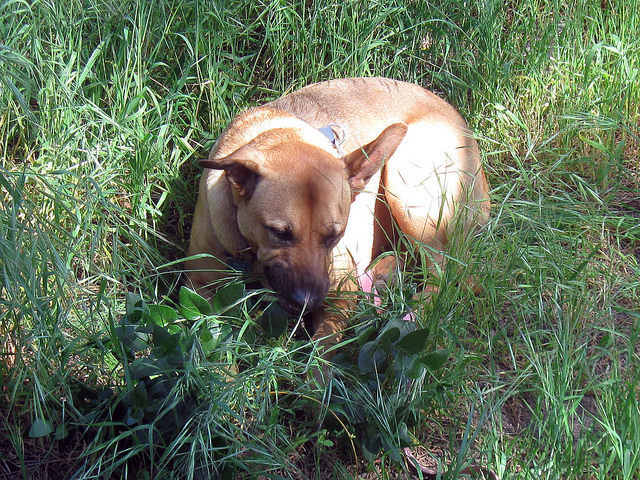
#2 – Mounting another dog is a sign of dominance
Dominance theory has been largely disputed by some of the best minds in dog behavior. Mounting, in particular, is not a dominance or even a sexual behavior most of the time. Many dogs will mount when they are “over stimulated” in a situation, due to excitement or stress, for example. And both sexes display the behavior whether they are altered or not.

#3 – All dogs like other dogs
This belief has caused more fights at more dog parks than it should. Just because a dog is a dog does not mean he wants to socialize. And that’s okay! Not every person wants to be put in a room with a bunch of strangers and be forced to greet them either.
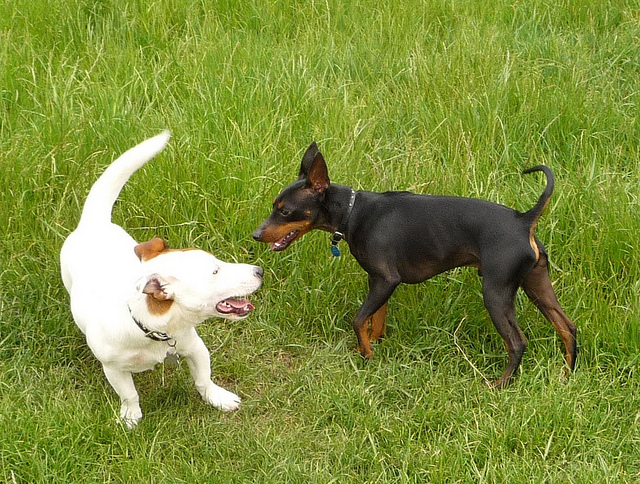
#4 – Dogs are colorblind
Studies have shown that dogs can actually see several colors, including different saturations of yellow, blue and grey.
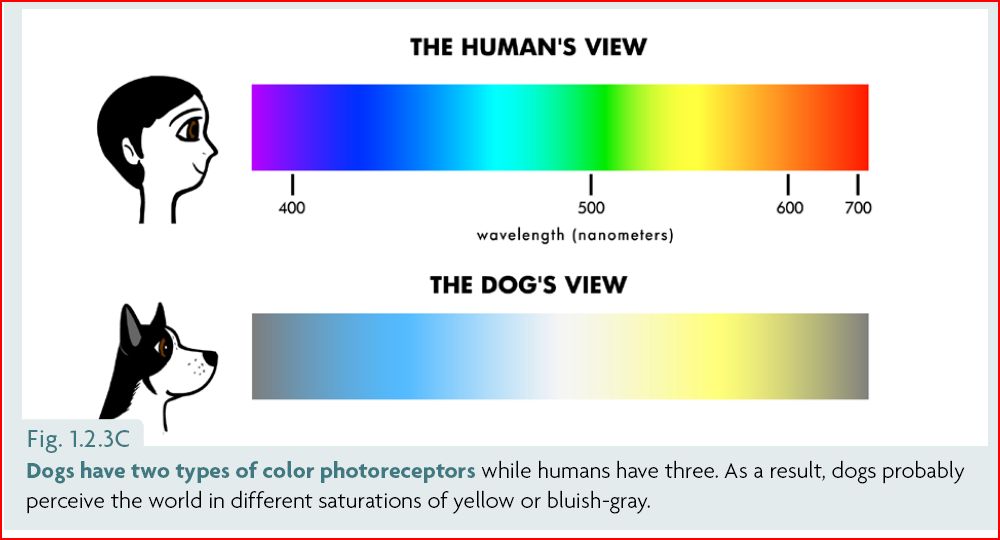
#5 – A wagging tail means a friendly dog
Believing this myth can get you bitten. A wagging tail in a dog can mean a number of things, including excitement and happiness, but also alertness and even aggression. It’s best to not pet a dog unless you have the owner’s permission and you see other signs that the dog is indeed happy, such as a loose and relaxed body, ears down, etc.

#6 – A female dog should have her first heat before being spayed
While this is a greatly debated topic, one thing has been proven – it does not make your female dog healthier to wait until after her first heat. In fact, the opposite has been shown according to the ASPCA: females spayed prior to their first cycle have a “significantly reduced risk of developing mammary cancer.”
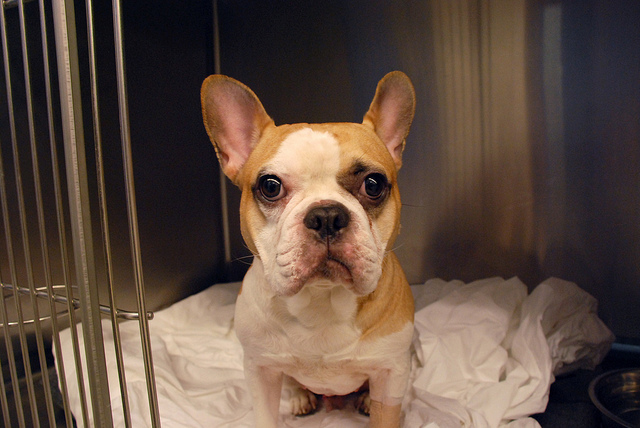
#7 – Multiple human years by seven to get your dog’s age
This is an old myth that is just not true. Determining your dog’s “age” has a lot of factors, including the breed (large breeds age much faster than little dogs). Petsadviser.com has a great chart and explanation that is more accurate.

#8 – A dog’s mouth is cleaner than yours
Whoever came up with this myth clearly never saw a dog with his nose deep in the litter box. It’s true – dog’s mouths are dirty. Of course, new studies are also showing they can help strengthen immune systems…but that doesn’t mean you should let your dog lick you after eating some “kitty roca.”
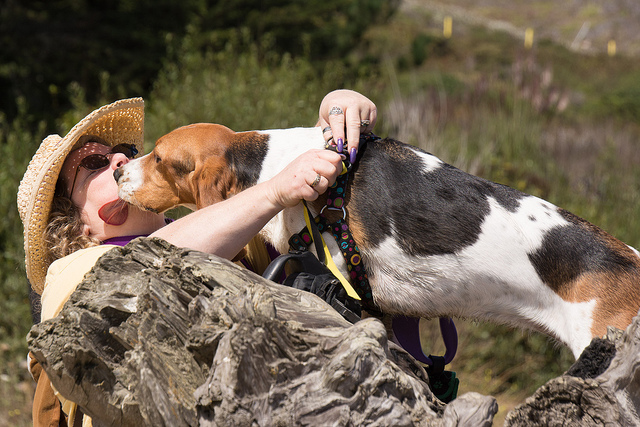
#9 – Indoor dogs don’t need flea/heartworm prevention
Just because your dog lives inside most of the time, does not mean he doesn’t need flea or heartworm prevention. He has to go outside sometime, even if it’s just to go to the bathroom. But chances are you also take him to the park, or for a walk around the neighborhood. Anytime your dog is out, you can be exposing him to pests. Plus, you can bring fleas home with you if you visit an infested dog.

#10 – A cold, wet nose is a sign of a healthy dog
This is such a dated myth, it should be considered an old wives tale. The truth is, the wetness or dryness and temperature of a dog’s nose fluctuates and is not a reliable indication of health. For example, a dog with nasal discharge is sick, but his nose will be wet. (www.pets.webmd.com)

#11 – Dogs feel guilt
This myth is an easy one to believe – after all, we have all seen that “look” when we get home and discover our dog has done something wrong. However, behaviorists says dogs do not feel shame or guilt. The “look” is a response to your behavior – yelling, shaking your finger at your dog, running toward them, etc.

#12 –Your dog will get enough exercise alone in his backyard
This myth was probably created so owner’s wouldn’t feel guilty about not exercising their dog. The truth is, however, that most dog’s don’t run around until they are tired when they are alone in the yard and they certainly do not use their brain much. They either sleep or practice destructive behavior. The best way to exercise your dog is both physically and with mental stimulation – as this combination will give you a tired (and well-behaved) dog.

#13 –Table scraps are fine
Aside from all the poisonous ingredients–such as onions that you may forget are in your dish–table scraps give your dog empty calories and a lot of fat that can add pounds and shorten his life.

#14 –Mixed breed dogs are always healthier than purebreds
The problem with this myth is it is too broad. Mixed breed dogs can have just as many health issues as purebred dogs can. The caveat is that some purebred dogs may have more genetic issues, especially if there is a limited gene pool and/or too much inbreeding.

#15 –A dog’s breed affects his intelligence
While this myth has grown to be taken as fact when it comes time to choose a breed of dog for your family, Dr. Brian Hare says there is absolutely no scientific evidence (at this point in time) to support this. He says it would take a huge study with puppies of different breeds being raised in the same environment in order to truly prove if breed affects intelligence.

